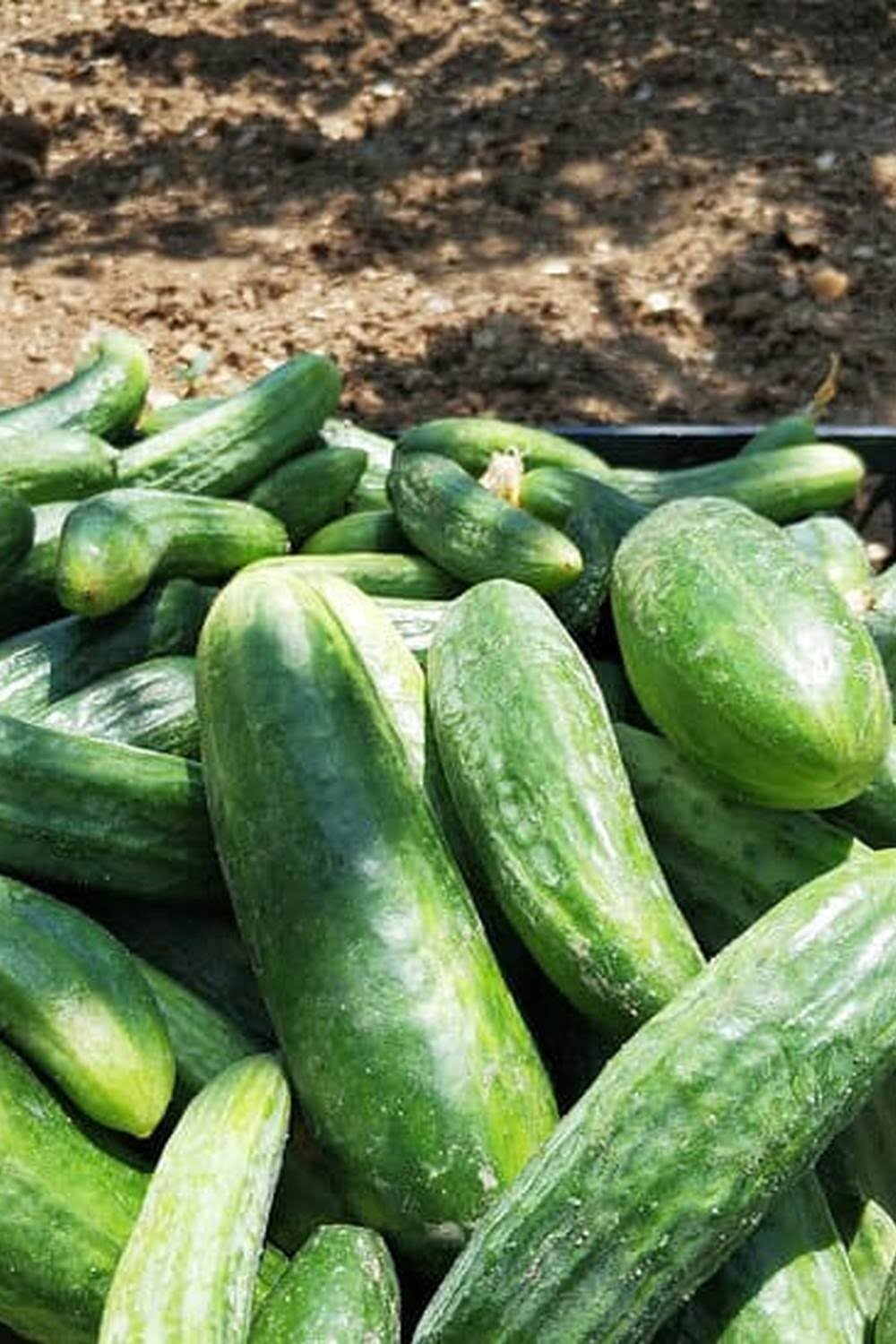Vertical gardening has taken the gardening world by storm, and one of the latest trends in this practice is the creation of wall vegetable gardens. These innovative gardens allow individuals to grow their own fresh produce while making the most of limited space.
With the increasing popularity of sustainable living and urban gardening, wall vegetable gardens have become a practical and stylish solution for many. In this article, we will explore the benefits of wall vegetable gardens, how to choose the right wall for your garden, which vegetables thrive in vertical gardens, DIY ideas for creating your own wall vegetable garden, and maintenance tips for keeping it thriving.
Wall vegetable gardens offer a unique way to maximize space while reaping the rewards of homegrown produce. Whether you have a small backyard, balcony, or even just a sunny wall indoors, these gardens can be customized to suit any space. From herbs to tomatoes to leafy greens, with the right planning and care, virtually any vegetable can be grown in a vertical garden.
In this article, we will delve into the various aspects of wall vegetable gardens-from their benefits and practicality to maintenance and DIY ideas. Along with success stories highlighting real-life examples of flourishing wall vegetable gardens, we aim to provide readers with all they need to know about embracing this trend for sustainable living. So let’s get started on exploring the world of wall vegetable gardens.
Benefits of Wall Vegetable Gardens
Wall vegetable gardens have been gaining popularity in recent years due to their numerous benefits. One of the main advantages of wall vegetable gardens is that they enable individuals to grow their own produce in limited space, making it an ideal option for urban dwellers with small yards or balconies. This method also allows for easy access to fresh, organic vegetables right at your fingertips.
In addition, wall vegetable gardens help improve air quality and reduce the urban heat island effect by providing shade and cooling. They also contribute to the reduction of energy costs by insulating buildings and homes which can lead to significant savings. Furthermore, these gardens can act as a form of natural insulation, regulating indoor temperatures and reducing the need for excessive heating or cooling.
Individuals considering establishing a wall vegetable garden should carefully select the right wall. Factors such as sunlight exposure, available space, and structural integrity must be taken into account when choosing a suitable location for a vertical garden. It is essential to evaluate factors like wind exposure and irrigation needs when planning your wall vegetable garden to ensure its success in producing healthy vegetables.
| Advantages | Benefits |
|---|---|
| Grow produce in limited space | Improves air quality and reduces urban heat island effect |
| Easy access to fresh organic vegetables | Reduces energy costs by insulating buildings |
| Eco-friendly way of growing food | Natural insulation that regulates indoor temperatures |
Choosing the Right Wall for Your Vegetable Garden
When it comes to creating a wall vegetable garden, one of the most important decisions you’ll need to make is choosing the right wall for your setup. Not all walls are created equal when it comes to supporting the weight of a vertical garden and providing the necessary conditions for your vegetables to thrive. Here are some factors to consider when selecting the perfect wall for your vegetable garden:
1. Structural Integrity: It’s crucial to choose a wall with strong structural integrity that can support the weight of your vertical garden. Look for walls made of sturdy materials such as brick, concrete, or solid wood.
2. Sun Exposure: Consider the amount of sunlight that your chosen wall receives throughout the day. Most vegetables require at least 6-8 hours of direct sunlight, so be sure to select a wall that offers adequate sun exposure for your plants.
3. Water Drainage: Proper water drainage is essential for the health of your plants. Choose a wall that allows excess water to drain away easily, preventing waterlogging and root rot.
4. Accessibility: Select a wall that is easily accessible for planting, watering, and harvesting. You’ll want to be able to reach all areas of your vertical garden without difficulty.
Once you’ve identified a suitable wall for your vegetable garden, you can begin the exciting process of planning and installing your vertical growing space.
With these considerations in mind, you can effectively create a functional and beautiful wall vegetable garden that will provide an abundance of fresh produce while adding greenery and visual interest to any outdoor or indoor space. Creating a thriving vegetable garden on a wall can be both rewarding and sustainable.
Types of Vegetables That Thrive in Vertical Gardens
When it comes to wall vegetable gardens, choosing the right types of vegetables is crucial for ensuring a successful and bountiful harvest. Not all vegetables are well-suited for vertical gardening, so it’s important to select varieties that are able to thrive in this unique growing environment.
One category of vegetables that tends to do particularly well in wall vegetable gardens is leafy greens. These include options such as lettuce, spinach, kale, and Swiss chard. Leafy greens have relatively shallow root systems, making them well-suited for vertical planters or hanging baskets.
Another group of vegetables that can flourish in vertical gardens is herbs. Popular choices like basil, parsley, cilantro, and mint are not only flavorful additions to meals but also tend to be compact and grow well in small spaces. Many herbs also have cascading or trailing growth habits that make them visually appealing when grown on a vertical surface.
Additionally, certain vine crops can be a great fit for wall vegetable gardens. Varieties such as cherry tomatoes, cucumbers, and pole beans can be trained to grow upward with the help of trellises or support structures. Growing these types of crops vertically can save space while also making fruit production more accessible and easier to manage.
| Vegetable Type | Examples |
|---|---|
| Leafy Greens | Lettuce, Spinach, Kale, Swiss Chard |
| Herbs | Basil, Parsley, Cilantro, Mint |
| Vine Crops | Cherry Tomatoes, Cucumbers, Pole Beans |
DIY Wall Vegetable Garden Ideas
Wall vegetable gardens are a great way to maximize space and grow your own fresh produce, even in small or urban areas. In this section, we will explore some creative and practical DIY ideas for creating your own wall vegetable garden.
Vertical Pallet Garden
One popular and affordable DIY option for a wall vegetable garden is using a wooden pallet. You can easily find pallets at local garden centers or hardware stores. Simply stand the pallet upright and attach landscape fabric to the back and bottom to create pockets for soil. Then, add your chosen vegetable plants or seeds into the pockets and water regularly. This method allows you to have multiple “shelves” of plants in one compact area.
Gutter Garden
Another unique idea is to repurpose old gutters as a vertical vegetable garden. Secure the gutters to a wall or fence, fill them with potting soil, and plant your vegetables. This method works particularly well for growing lettuces, herbs, and smaller root vegetables like radishes and carrots.
Hanging Shoe Organizer Garden
If you’re short on outdoor space, consider using a hanging shoe organizer to create a small wall garden. Attach the organizer to a fence or wall, fill each pocket with potting soil, and plant individual herbs or small vegetable plants in each pocket. This allows you to make use of vertical space without taking up valuable ground space.
By incorporating these DIY ideas into your own gardening efforts, you can enjoy the benefits of growing your own fresh produce while also utilizing limited space effectively with wall vegetable gardens.
Maintenance and Care Tips for Wall Vegetable Gardens
Wall vegetable gardens can be a beautiful and practical addition to any home, providing a space-saving way to grow your own fresh produce. However, like any garden, they require proper maintenance and care to ensure that your vegetables thrive. Here are some tips for keeping your wall vegetable garden in top condition:
- Regular watering: Because of their vertical nature, wall vegetable gardens may require more frequent watering than traditional gardens. Be sure to check the moisture levels of the soil regularly and water as needed to keep the plants healthy.
- Pruning and harvesting: Keep an eye on your plants and prune them as needed to encourage healthy growth. Additionally, be sure to harvest your vegetables when they are ready – not only will this provide you with delicious produce, but it will also help the plants continue to produce more throughout the season.
- Fertilization: Just like any garden, wall vegetable gardens benefit from regular fertilization. Consider using organic fertilizers to feed your plants nutrients without harmful chemicals.
In addition to these general maintenance tips, it’s important to consider the specific needs of the types of vegetables you have chosen for your wall garden. Some plants may require more sunlight or shade, while others may need added support as they grow.
Regardless of the specific care required for your chosen vegetables, one thing is certain – maintaining a wall vegetable garden can be a rewarding experience that provides you with fresh, homegrown produce while adding beauty and functionality to your living space. With proper care and attention, your vertical garden is sure to flourish and bring joy for years to come.
Success Stories
When it comes to wall vegetable gardens, many individuals and organizations have embraced this innovative way of growing vegetables in limited spaces. These success stories not only showcase the beauty and functionality of wall vegetable gardens, but also inspire others to start their own vertical gardens. From urban apartments to commercial buildings, these real-life examples prove that anyone can create a thriving wall vegetable garden.
Urban Apartment Living
In urban areas where space is limited, many people have turned to wall vegetable gardens as a solution for growing their own fresh produce. One inspiring success story is that of a couple living in a small apartment in the city who transformed their balcony into a lush vertical garden filled with herbs, tomatoes, and peppers.
Their dedication to sustainable living and passion for gardening has not only provided them with homegrown produce but has also added an aesthetic appeal to their outdoor space.
Commercial Buildings and Offices
In addition to residential spaces, commercial buildings and offices have also embraced the trend of wall vegetable gardens. Companies are incorporating vertical gardens into their office spaces not only for decorative purposes but also for promoting sustainability and employee wellness. One successful example is a tech company that installed a large-scale vertical garden in their office lobby, which not only serves as a natural air purifier but also provides employees with fresh herbs and greens for cooking.
Community Gardens
Finally, community gardens have utilized the concept of wall vegetable gardens to overcome limited ground space. By installing vertical garden structures on fences or walls, these community spaces have been able to expand their gardening capabilities and provide more opportunities for residents to grow their own food. Successful community wall vegetable gardens not only bring neighbors together but also contribute to food security and overall well-being within the neighborhood.
These real-life success stories demonstrate the adaptability and impact of wall vegetable gardens in various settings. Whether it’s in urban apartments, commercial buildings, or community spaces, these examples show how anyone can embrace this sustainable gardening trend and enjoy the benefits of growing one’s own fresh produce even in limited spaces.
Conclusion
In conclusion, wall vegetable gardens offer a myriad of benefits and opportunities for sustainable living. By utilizing vertical spaces to grow fresh produce, individuals can reduce their carbon footprint, decrease food miles, and promote a more environmentally friendly lifestyle. The trend of wall vegetable gardens is not only aesthetically pleasing but also plays a vital role in contributing to the wellness of the planet.
Furthermore, embracing this trend allows individuals to take control of their food sources, knowing exactly where their produce comes from and how it’s grown. This form of gardening also encourages creativity and innovation in maximizing limited space for urban dwellers. With the right selection of vegetables and proper maintenance practices, wall vegetable gardens can flourish and provide a bountiful harvest even in small areas.
As the popularity of wall vegetable gardens continues to grow, it is evident that this trend is here to stay. From community projects to residential homes and even commercial spaces, the versatility and sustainability of these gardens make them an attractive option for anyone looking to incorporate eco-friendly practices into their lifestyle. Whether it’s through DIY projects or investing in professional assistance, embracing wall vegetable gardens is a step towards a more sustainable future for all.
Frequently Asked Questions
Can You Grow Vegetables in a Wall Garden?
Yes, you can grow vegetables in a wall garden. This type of gardening maximizes space and allows for vertical growth, making it an ideal option for those with limited space or urban dwellers.
How Do You Build a Vegetable Garden Wall?
To build a vegetable garden wall, you will need to first choose the location and the type of wall you want to use. Then, you’ll need to prepare the area by clearing any debris and ensuring proper drainage. After that, you can install your chosen structure and add soil and compost before planting your vegetables.
What Is the Most Efficient Vegetable Garden Layout?
The most efficient vegetable garden layout depends on various factors such as the available space, sunlight exposure, and personal preference. However, many gardeners find that using raised beds or square foot gardening techniques can be highly efficient as they maximize space and simplify maintenance.
These layouts also allow for better organization and easier access to the plants for watering and harvesting.

If you’re looking to get into vegetable gardening, or are just looking for some tips on how to make your current garden better, then you’ve come to the right place! My name is Ethel and I have been gardening for years. In this blog, I’m going to share with you some of my best tips on how to create a successful vegetable garden.





